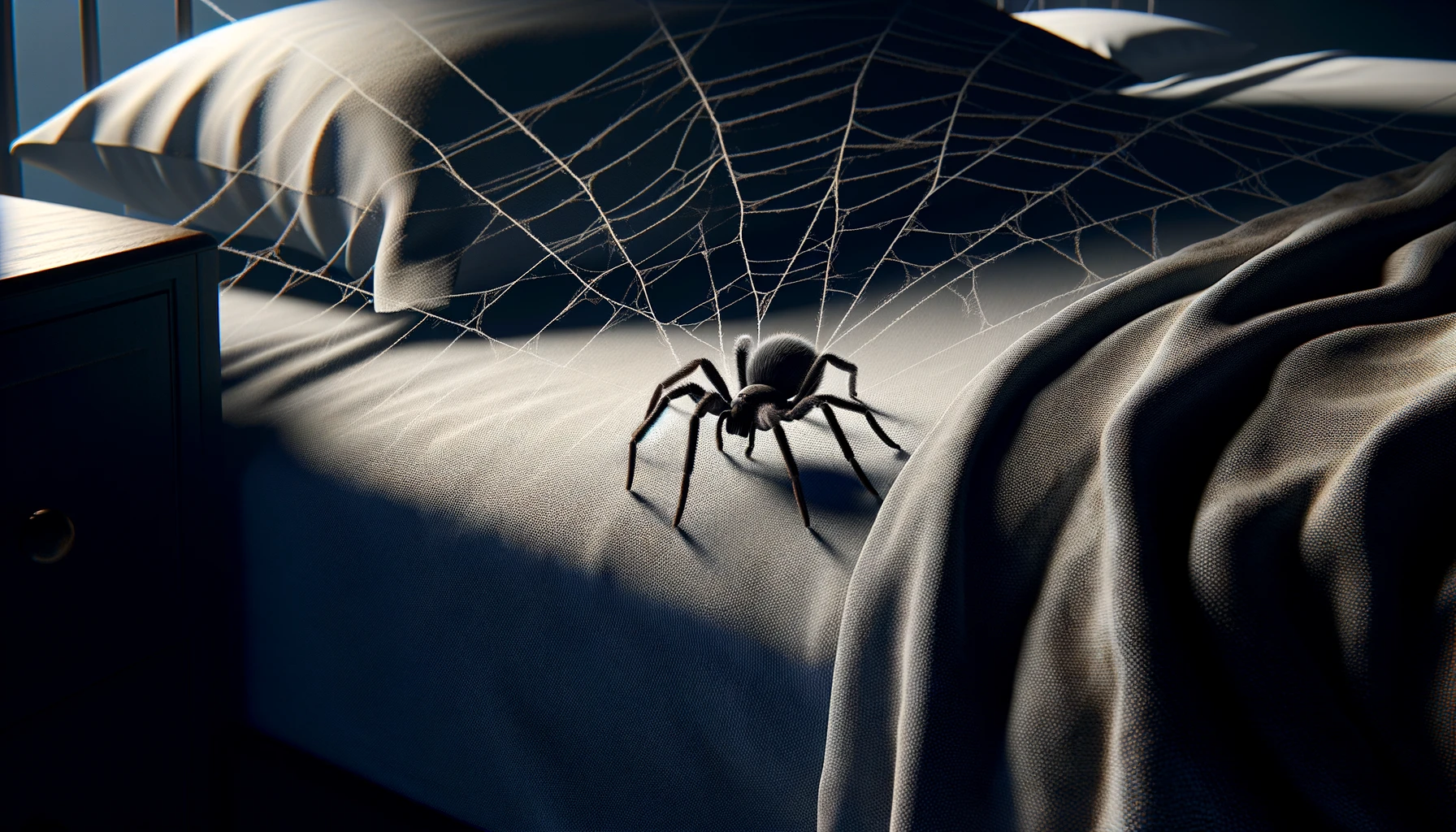
1, Mar 2024
Do Black House Spiders Climb into Beds?
The concept of spiders crawling into our beds is enough to make many people nervous. In particular, black house spiders’ velvety, dark look frequently raises concerns about their activities and the safety of our beds against their investigations. With support from both scientific findings and professional perspectives, this article explores the activities of black house spiders in order to determine the probability that they may climb into beds.
Key Takeaways
- Black house spiders prefer secluded and less disturbed areas rather than human beds.
- Instances of these spiders in beds are rare and usually accidental.
- Preventive measures can significantly reduce the chances of any spider entering your sleeping area.
(TOC)
- Introduction
- Understanding Black House Spiders
- Habitat and Behavior
- Diet and Prey
- Do They Climb into Beds?
- Preventive Measures
- Relevant Resources
Understanding Black House Spiders
Habitat and Behavior
Black house spiders (Badumna insignis) are known for their preference for dark and secluded spaces. Typically found in the crevices of window frames, under eaves, and within unused corners of buildings, they weave sticky, tangled webs to capture their prey.
- Natural habitat: They thrive in outdoor environments but can adapt to indoor spaces if conditions are favorable.
- Interaction with humans: Rarely aggressive to humans and tend to avoid high-activity areas.
Diet and Prey
Primarily, black house spiders feast on a variety of insects, including flies, mosquitoes, and other small bugs. Their presence can inadvertently aid in controlling pest populations within homes.
- Predatory behavior: They show that they have less need to go far from their established areas by using their webs to catch prey.
Do They Climb into Beds?
The idea of black house spiders venturing into human beds is a concern grounded more in fear than in fact. Given their preferred habitats and feeding habits, these spiders have little reason to climb into beds intentionally.
- Accidental encounters: On the rare occasion a spider is found in a bed, it is typically accidental, perhaps in pursuit of prey or if disturbed.
Preventive Measures
Implementing a few simple strategies can greatly minimize the likelihood of encountering black house spiders in your bed:
- Maintain cleanliness: Regular cleaning and decluttering reduce hiding spots for spiders and their prey.
- Seal openings: Ensuring windows, doors, and walls are sealed can prevent spiders from entering.
- Control outdoor lighting: Minimizing lights that attract insects can indirectly reduce spider attraction to your home.
Further Preventive Measures
Beyond the initial steps outlined previously, there are additional strategies that can further deter black house spiders from entering your sleeping area:
Minimize Attractants
- Reduce clutter: Clutter provides hiding spots for spiders and their prey. Keeping your living space tidy can discourage spiders from settling in.
- Use essential oils: Certain essential oils, like peppermint, are believed to repel spiders. Applying these around potential entry points can act as a deterrent.
Professional Pest Control
- Regular inspections: Having a professional pest control service inspect your home can help identify and seal potential entry points for spiders.
- Targeted treatments: Professional exterminators can provide treatments that specifically target spiders, reducing their population around your home.
Frequently Asked Questions
Do black house spiders pose a danger to humans?
- Generally harmless: Black house spiders are not considered dangerous to humans. Their bites are rare and typically result in no more than mild, localized pain.
Can black house spiders be beneficial?
- Natural pest control: By preying on insects, black house spiders can help control pest populations in your home, serving as a form of natural pest control.
How can I safely remove a black house spider from my home?
- Capture and release: Using a glass jar and a piece of paper, you can safely capture and release the spider outside, away from your home.
What are the signs of a black house spider infestation?
- Webbing: An increase in webbing around your home, especially in dark, undisturbed areas, might indicate the presence of black house spiders.
- 0
- By Faizan Khan

10, Jan 2024
Removal And Prevention of Black House Spiders
Welcome to the ultimate guide on removing and preventing black house spiders. If you’re concerned about these clever, eight-legged pests and seek practical solutions, you’re in the right place. We’ll delve into the habits, potential risks, and secure methods to remove black house spiders, aiming to maintain your peace of mind and a spider-free home. Let’s begin our journey!
In-Depth Understanding of Black House Spiders
Black house spiders are rich in many households and are distinguished by their black coloring and threatening look. It’s essential to comprehend their habits and actions in order to handle them successfully.
Identifying Black House Spiders
Effective control starts with identification. Black house spiders have a robust body and range in color from brown to black. Males are smaller, and adult females can reach up to 1.5 inches. Their webs are messy and irregular, often found in corners and crevices.
Habitats and Preferred Environments
These spiders favor quiet, undisturbed areas like basements, attics, closets, and outdoor structures. They’re adept at hiding in dark corners, making them elusive.
Dietary Habits
Their diet primarily consists of insects, making them natural pest controllers. They commonly prey on flies, mosquitoes, and other small insects.
Lifecycle and Breeding Patterns
Understanding their lifecycle is key. Females lay eggs in silky sacs and nurture them until hatching. Knowing their breeding behavior is crucial for preventing infestations.
Safe and Effective Removal Strategies
With a clear understanding of their habits, let’s explore safe and efficient methods to remove these spiders.
Manual Removal: A gentle way to remove spiders is to carefully catch them in a jar or container and release them outside.
Vacuuming: To get rid of spiders and webs in difficult-to-reach places, use a vacuum cleaner.
Minimize Outdoor Lighting: By lowering the amount of lights outside your home, you will lessen the amount of insects around, which will lessen the attractiveness of spiders.
Natural Repellents: Apply natural repellents in spider-prone locations, such as vinegar solutions or peppermint oil.
Expert Assistance: For a secure and efficient elimination of large infestations, think about hiring a pest control company.
Assessing Potential Dangers
It’s crucial to understand the risks even though they’re usually not severe. Although modest discomfort and swelling might result from bites, more serious reactions may occur in allergic individuals.
Step-by-Step Removal Guide
- Identification: Observe their physical traits and webs for accurate identification.
- Non-Chemical Methods:
- Vacuuming: Use a vacuum with a nozzle to remove spiders and webs.
- Physical Removal: Safely transport spiders outside using a cup and paper.
- Natural Repellents:
- Essential Oils: Create a spray with peppermint, tea tree, or lavender oil mixed with water.
- Preventive Measures:
- Sealing Entry Points: Use weather stripping or caulk on gaps around windows and doors.
- Natural Predators: Encourage lacewings and ladybugs in your garden.
- Yellow Light Bulbs: Replace bright lights with yellow bulbs to deter insects.
- Diatomaceous Earth: Apply in common spider areas; it’s safe for humans but lethal for spiders.
Conclusion:
Mastering the art of black house spider removal involves understanding their behavior, recognizing potential risks, and employing safe, non-chemical removal techniques. Promoting a balanced ecosystem and using methods like diatomaceous earth and yellow light bulb substitution fortifies your home against future infestations. Embrace these practices for a comfortable, spider-free living space!

4, Jan 2024
What to do if Bitten By Black House Spider
In the quiet corners of Eastern Australia, the Black House Spider (Badumna insignis) lurks, mostly keeping to itself. Rarely venturing into human habitats, these creatures are generally benign. However, understanding the appropriate response to a bite can dispel fear and ensure safety. This guide offers a step-by-step approach to dealing with a Black House Spider bite, from identification to prevention.
Identifying a Black House Spider Bite
The hallmark of a Black House Spider bite includes mild discomfort, redness, and swelling. While these bites are seldom a cause for alarm, recognizing them is the first step in effective management.
Immediate Actions to Take
Stay Calm: Keep your cool. Panic can exacerbate the situation, increasing stress and potentially intensifying symptoms.
Clean the Area: Gently cleanse the bite site with mild soap and water. This simple act can ward off infection and aid in healing.
Apply a Cold Compress: Use ice or a cold pack, wrapped in a soft cloth, on the bite site to soothe pain and minimize swelling. Limit each application to 10-15 minutes to protect the skin.
Monitoring Symptoms Post-Bite
Manage Pain: Over-the-counter pain relievers such as acetaminophen or ibuprofen can alleviate discomfort. Follow dosage instructions carefully to avoid complications.
Watch for Allergies: Be vigilant for signs of an allergic reaction, including difficulty breathing, hives, or chest pain. These symptoms necessitate immediate emergency care.
When to Seek Professional Medical Help
While most bites from Black House Spiders are mild, certain conditions warrant professional medical attention:
Severe Symptoms: If symptoms escalate, spreading beyond the bite area, it’s time to consult a healthcare provider.
Allergic Reactions: Any indication of an allergic reaction, such as shortness of breath or rapid heartbeat, requires urgent medical intervention.
Persistent Symptoms: A medical professional should evaluate symptoms that linger or worsen over time to rule out complications.
Preventive Measures Against Spider Bites
Prevention is your best defense against spider bites:
Maintain Cleanliness: A tidy environment is less inviting to spiders. Regular cleaning reduces hiding spots and deters spiders from settling in.
Wear Protective Clothing: When venturing into spider-prone areas, don protective gear such as long sleeves and gloves. Think of it as your shield against unwelcome bites.
Conclusion:
Though the thought of a spider bite might be unsettling, proper knowledge and preparedness can make all the difference. Most encounters with Black House Spiders can be managed safely and effectively by staying calm, treating the bite appropriately, and monitoring symptoms. Always err on the side of caution and seek medical advice if symptoms are severe or persist. Additionally, embracing preventive measures can significantly reduce the likelihood of bites.
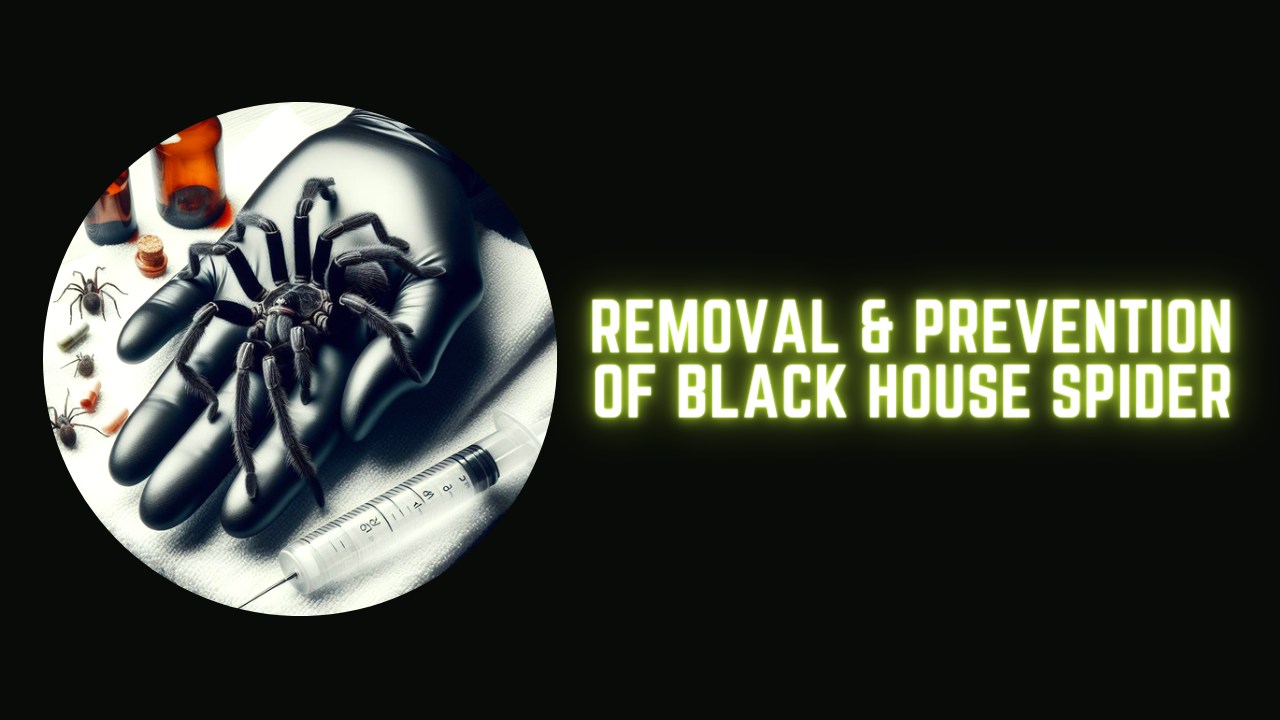
28, Dec 2023
Black House Spider Bite Symptoms and Treatment
Black house spiders provide an odd problem because they frequently lurk in the calm places of our houses and gardens. Although they are not usually aggressive, their bites may result in more significant health issues in addition to pain. We look into the world of black house spiders in this extensive guide. We will discuss common symptoms from their bites, necessary first aid protocols, when to seek medical attention, and practical ways to avoid coming into contact with these eight-legged residents. Our goal is to provide you with information and self-assurance so that you may overcome fear and uncertainty with knowledge and readiness.
Identifying Black House Spider Bites
The initial intense pain, regional swelling, and, in rare instances, milder symptoms like headaches or nausea are indicators of a black house spider bite. In contrast to more threatening species, their bites often do little damage and recover without significant issues. It’s imperative to keep an eye out for any bite for indications of an infection or allergic reaction, nevertheless. Understanding and accurately recognizing these bites is essential to allay fears and encourage cohabitation with these frequently misunderstood spiders, as encounters with them in urban areas have grown.
Detailed Symptoms of Black House Spider Bites
The variety of symptoms brought on by bites from black house spiders is examined in detail in this section. We will address the entire range of potential symptoms, from early indications like redness and swelling to less common, more severe reactions.
Redness and Swelling: One of the most common reactions to a spider bite is redness and swelling in the bite region.
Pain or Itching: At the bite site, people frequently describe experiencing acute pain or itching.
Localized Reaction: The response to a Black House Spider bite is typically restricted to the site of the bite, in contrast to some more harmful bites.
Minor Skin Reactions: Some people may get a little rash or elevated spot on their skin in the vicinity of the bite.
Immediate First Aid Measures
Discover essential first aid steps to mitigate the effects of a black house spider bite. Practical advice on managing pain, reducing swelling, and preventing infection will be provided in a clear, easy-to-follow format.
Clean the Bite: To lower the chance of infection, wash the affected area with soap and water.
Cold Compress: To reduce swelling and ease discomfort, apply a cold pack or a cloth moistened with cold water.
Elevation: To lessen swelling, raise the affected limb if the bite is on an arm or leg.
Avoid Scratching: To reduce further swelling and the chance of infection, try not to scratch the bite area.
Over-the-counter Medication: Acetaminophen and ibuprofen are two examples of over-the-counter pain relievers that can be used for pain relief.
When to Seek Medical Attention
Understanding when a spider bite requires professional medical attention is crucial. This part will guide you through recognizing signs of severe reactions and the importance of timely medical consultation.
Severe Pain: In cases where the bite’s discomfort is exceptionally intense or does not go away when taking over-the-counter medication.
Signs of Infection: Increased redness, swelling, discharge, or warmth near the bite, as well as the development of a fever, are indicators of infection.
Allergic Reaction: Signs such as trouble breathing, swelling in the throat, lips, or eyelids, or a rash that looks like hives could be an allergic reaction.
No change: When there is no discernible change in the symptoms over a few days, they continue or get worse.
Underlying disorders: After a bite, people with compromised immune systems or certain medical disorders should see a doctor.
Effective Prevention Strategies
Preventing bites is key. We’ll share expert advice on how to deter black house spiders from your living spaces and protect yourself from potential bites.
Regular Cleaning: To lessen spider hiding places, keep your home tidy and clutter-free.
Seal Entry Points: Inspect and caulk any fissures or gaps in doors, windows, and walls.
Take Down Webs: Whenever you see spider webs in your home, take them down.
Use of Insect Repellents: In locations where spiders are regularly observed, take into consideration applying chemical or natural repellents.
Maintain Outdoor Spaces: To deter spiders from building their nests close to your house, keep gardens and outdoor spaces well-kept.
Storage Caution: Exercise caution while opening boxes or products that have been stored for an extended period.
Wear Protective Clothing: As a precaution, wear gloves and long sleeves in locations where there is a high spider activity.
Professional Pest Control: If you have a persistent spider problem, consult a professional pest control service.
Understanding Black House Spiders
Gain insights into the behavior and ecology of black house spiders. This knowledge not only helps in prevention but also in fostering a healthier coexistence with these creatures.
Conclusion:
Summarizing our guide, we emphasize the power of knowledge in dealing with black house spider bites. By staying informed, you can confidently manage and prevent these common encounters.
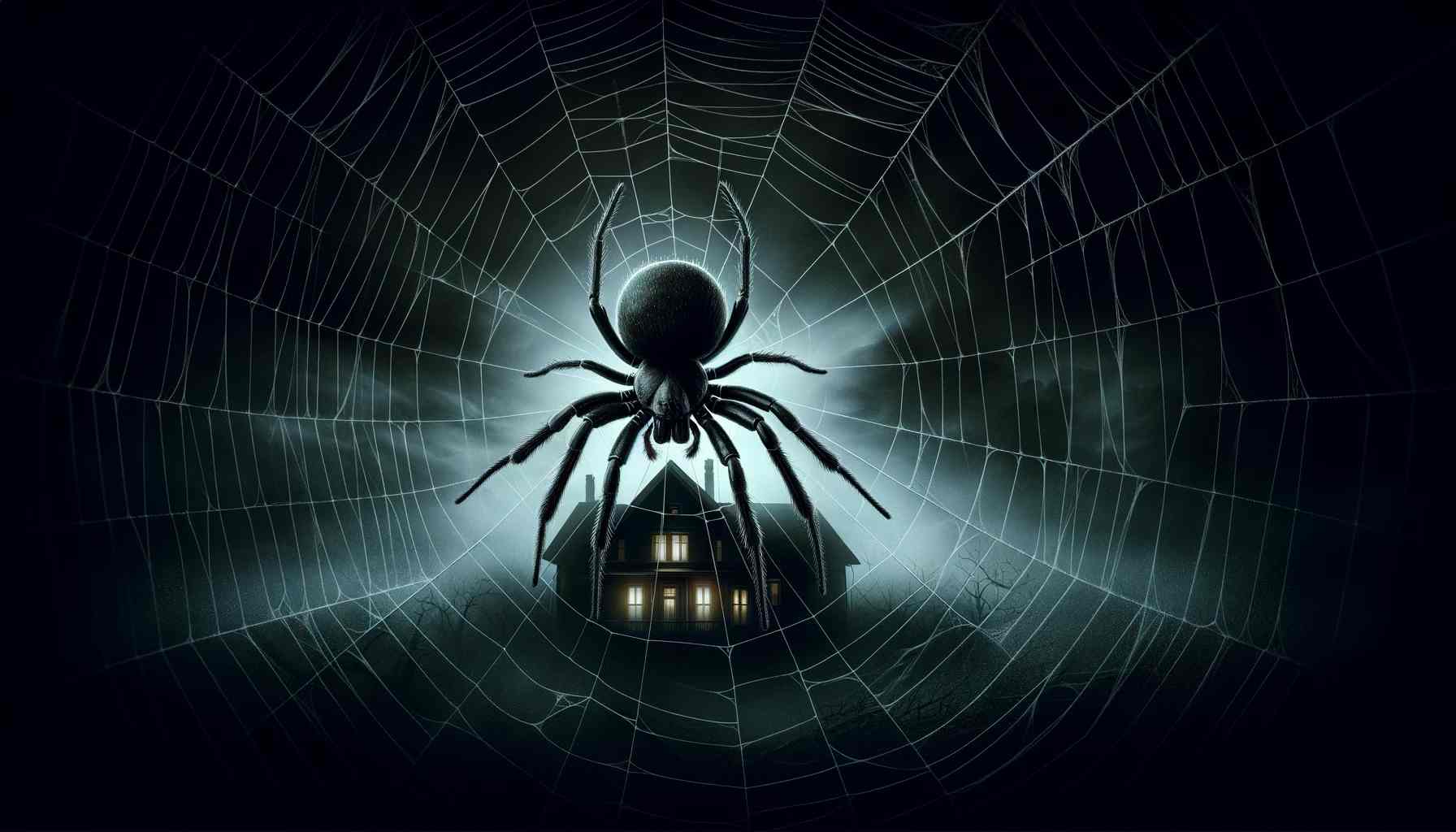
28, Dec 2023
Black House Spiders: Poisonous Facts and Misconceptions
The name “Black House Spider” describes a common species of cribellate Australian spider that creates curiosity and anxiety in equal measure. These spiders are distinguished by their strong bodies, funnel-shaped webs that decorate many Australian homes, and their dark brown to nearly black coloring.
The Architectural Marvel of Spider Webs
One cannot discuss Black House Spiders without marveling at their intricate webs. These webs, found in windowsills, entrances, and rough-barked trees, are examples of the spider’s architectural skill. The intricate, lacy constructions emphasize the spider’s place in the ecology since they are not only their places of residence but also efficient traps for unsuspecting prey like insects and bugs.
Decoding the Bite: Venom and Symptoms
While the term “venomous” often accompanies discussions about Black House Spiders, it’s essential to demystify their bite’s actual impact. Even though they have venom, just like their more frightening relative the Funnel-Web Spider, these spiders rarely bite humans and usually do so as a form of defense. Mild to moderate symptoms, such as slight swelling and discomfort, and in certain instances systemic reactions including nausea, dizziness, and sweating, can be experienced by those bitten. It’s crucial to remember that severe reactions are unusual, and the majority of people recover without the need for extensive medical care.
Understanding Their Habitat and Behavior
Black House Spiders thrive in both natural and urban environments, making their homes in secluded, undisturbed areas. Their preference for dark, sheltered spots leads them to inhabit spaces around window frames, doorways, and eaves, where they can spin their webs undisturbed. The females, known for their sedentary lifestyle, rarely leave their webs, maintaining and expanding their silken domains, while the males embark on journeys searching for mates, showcasing a fascinating aspect of their lifecycle.
The Myth vs. Reality of Black House Spiders
In the middle of the common myths about Black House Spiders, it’s important to distinguish fact from fiction. Even though they are poisonous, there is little chance that a bite from a spider will have serious effects. Rather than being a reason for concern, their presence in Australian houses is more frequently a result of natural pest control measures. Gaining knowledge about these spiders’ habits, habitat, and ecological significance can help people respect them more and feel less fearful of them.
Conclusion
The Black House Spider is an important part of nature’s intricate web, despite being the subject of many myths and misconceptions. A fresh viewpoint on these sometimes misinterpreted animals is provided by their architectural prowess, the comparatively low risk of their bites, and their role in managing insect populations. We can promote a more knowledgeable and considerate coexistence with the natural environment by learning more about these typical residents of Australian homes.

24, Dec 2023
Banishing Black House Spiders: Your Ultimate Guide to a Spider-Free Home
Have you ever encountered a black spider in the corners of your room? This common household occurrence often leads to the pressing question: What attracts these eight-legged creatures indoors? In this comprehensive guide, we’ll uncover the factors that draw black spiders into our homes, offering insights into their behavior, the influence of seasons, and practical measures for a spider-resistant living space.
Understanding Spider Behavior: Insights into Indoor Attraction
Because of their elaborate webs and quick movements, spiders are frequently thought of as unwanted guests. It’s critical to comprehend what draws spiders indoors in order to combat infestations of them successfully. It’s surprising to learn that spiders prefer habitats that satisfy their fundamental needs rather than ones that are disorganized.
What Attracts Spiders to Your House
Key reasons for spiders entering homes include:
- Search for Food: Spiders are drawn to places with an abundance of insects, their primary food source. Effective pest control is crucial in reducing these attractants.
- Avoidance of Predators: Indoors, spiders find refuge from natural predators like birds and larger insects.
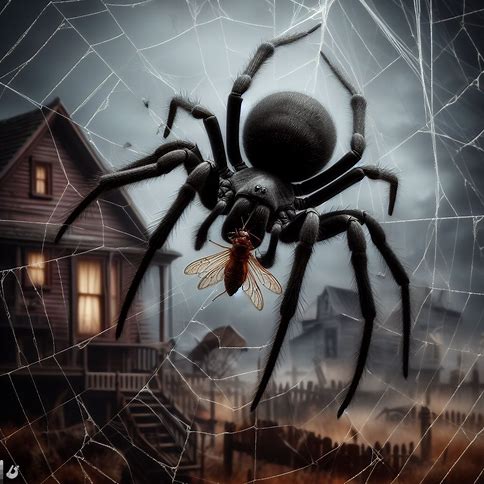
Seasonal Influence on Spider Infestations: Winter Woes
The onset of colder months often drives spiders to seek warmth and shelter indoors. Small crevices in walls, windows, and doors become gateways for these arachnids. Understanding and preparing for this seasonal behavior is key to spider prevention.
Winter-Proofing Your Home
As winter approaches, it’s essential to:
- Inspect and seal potential entry points.
- Repair cracks in walls or foundations.
- Maintain weatherproofing around windows and doors.
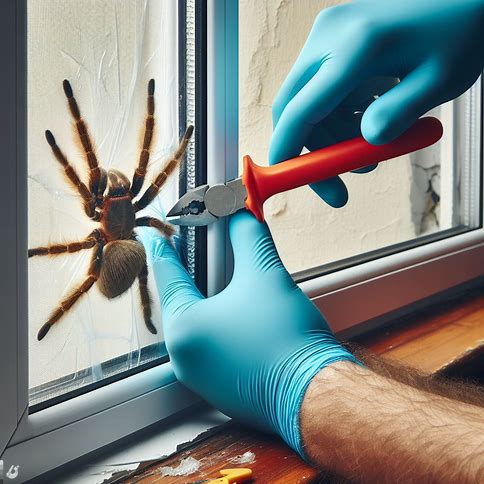
Making Your Home Less Inviting to Spiders
Breeding Grounds: Disrupting Spider Habitats
The controlled climate of homes makes them ideal for spiders. By addressing factors like consistent temperature and potential prey, we can make our spaces less attractive to spiders.
Preventive Measures for Spider Control
- Securing Entry Points: Regular inspections and sealing of gaps are crucial.
- Controlling Food Sources: Implement pest control and maintain cleanliness.
- Disrupting Spider Habitats: Regularly remove spider webs to prevent breeding and nesting.
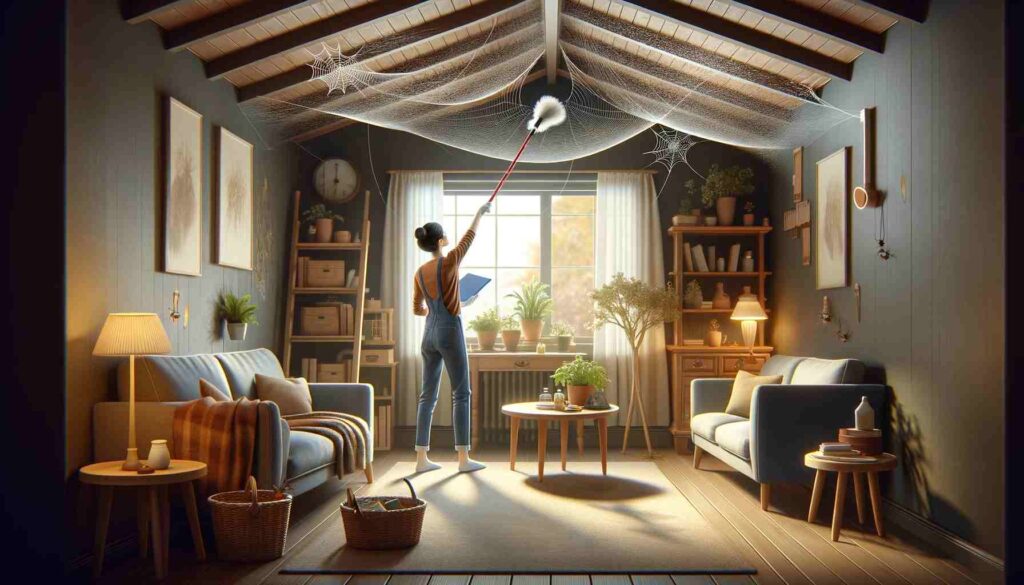
Addressing Common Concerns and FAQs
- How to Stop Spiders from Entering: Seal gaps, maintain cleanliness, and implement pest control.
- Sudden Spider Appearances: Often related to seasonal changes; prepare your home before winter.
- Spider Attraction Factors: Contrary to myth, spiders aren’t attracted by specific smells; focus on physical barriers and cleanliness.
- Spider Activity Peaks: Typically during colder months; proactive measures are key.
Conclusion: Embrace a Spider-Free Environment
By understanding the factors behind spider infestations and implementing strategic prevention measures, you can effectively maintain a spider-free home. Remember, knowledge, vigilance, and cleanliness are your best defenses against these uninvited arachnid guests. Say goodbye to black spiders and welcome peace of mind in your well-protected, spider-resistant living space.






